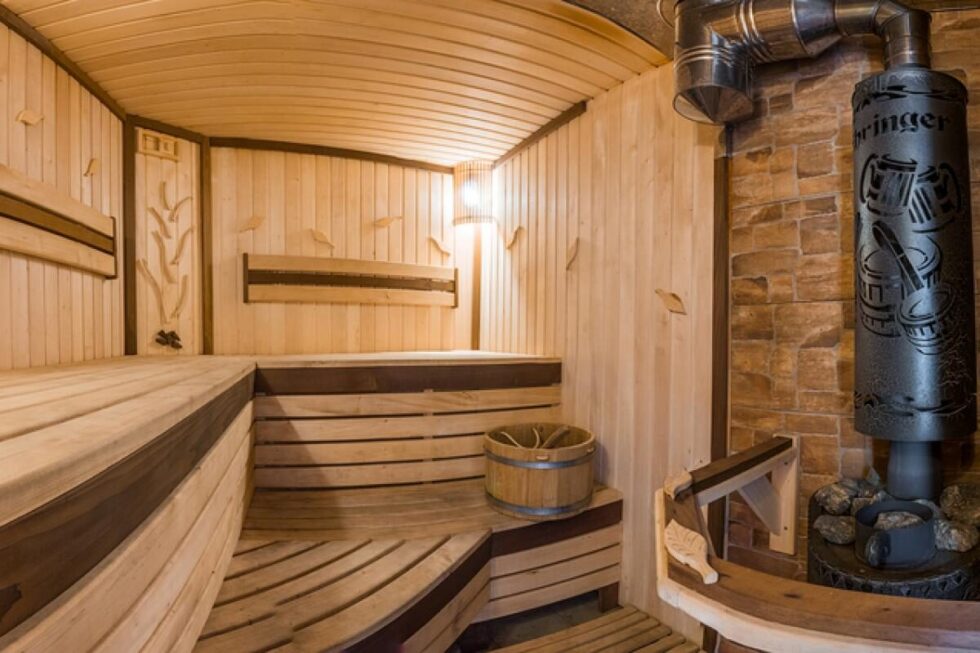What are the costs, permits, and steps to build a backyard sauna in Germany in 2025

Building a private sauna or banya in your backyard is becoming a true lifestyle trend in Germany. For many families, it is not just about relaxation, but also about health, recovery, and increasing property value. Germans are known for their Saunakultur, with saunas being part of wellness centers and even office complexes. Having a private sauna means enjoying all benefits without depending on opening hours of public spas. Legally, small garden buildings such as saunas can often be built without a full permit if they stay under 30–50 m², depending on the state (Bundesland). However, each region has slightly different regulations. The cost ranges from affordable prefab barrel saunas to luxury log banyas with terraces. In this guide we explain costs, permits, and practical steps, as highlighted by G.business.
Choosing the right location for your sauna
The location determines comfort and energy efficiency. Ideally, the sauna should be placed in a quiet garden corner with enough privacy from neighbors. German law requires a distance of at least 3 meters from the property border, though some municipalities demand more. In Bavaria and Baden-Württemberg, stricter regulations may apply, while in Berlin or Brandenburg, smaller Gartenhäuser are often allowed with just a notification. The ground must be stable and ideally prepared with a concrete slab. Proximity to electricity is essential for electric stoves, while wood-fired stoves require safe storage for firewood. Many Germans also combine saunas with terraces, cold plunge pools, or even small garden ponds. The location should allow easy access year-round, especially in winter.
Checklist for location selection:
- Minimum 3 m from neighbor’s property line.
- Concrete or block foundation for stability.
- Electrical connection (16–32 A).
- Optional water connection for shower or plunge pool.
- Protection from wind and direct street view.
- Sufficient space for relaxation area or terrace.
Materials and construction technologies
In Germany, quality wood and insulation are key for energy efficiency. Scandinavian spruce, Siberian larch, and Canadian cedar are popular choices. Interiors are typically made from aspen or alder, which do not overheat. Proper insulation with mineral wool and aluminum foil ensures that the sauna heats quickly and keeps energy costs low. Flooring is often ceramic or natural stone tiles, which are easy to clean. The stove is the heart of the sauna: electric heaters are most common, starting from €1,500–3,500, while wood-burning stoves cost €3,500–6,000 plus chimney installation. Sauna stones add €200–400. LED lighting designed for high humidity adds €300–600. For traditional banyas, Germans increasingly choose log construction, but this is the most expensive option.
Materials and prices in Germany:
- Structural wood: spruce from €800/m³, larch from €1,200/m³.
- Interior finishing: aspen, alder or cedar (€50–90/m²).
- Insulation: mineral wool (€8–12/m²) + aluminum foil.
- Flooring: ceramic or natural stone (€25–50/m²).
- Electric stove: €1,500–3,500.
- Wood-burning stove + chimney: €3,500–6,000.
- Sauna stones: €200–400.
Step-by-step construction process
The construction process in Germany is similar to other countries but must respect local building rules. First, a project must be prepared, and in many states (Bundesländer), a small sauna up to 30–50 m² only requires notification (Bauanzeige). Next, the foundation is built with a concrete slab costing around €2,000–5,000. The wooden frame and roof are then erected. After insulation and vapor barriers are added, the stove is installed and connected by a certified electrician. Ventilation is essential for safety and must meet German DIN standards. Benches are mounted at different heights, and windows or glass doors are often added for natural light. Finally, LED lighting and interior finishing are completed. If done DIY, the project takes 4–6 weeks; professional companies complete it in 2–3 weeks.
Construction stages in Germany:
- Project and municipal notification/permit.
- Build a concrete foundation (€2,000–5,000).
- Assemble walls and roof.
- Install insulation and vapor barriers.
- Mount stove and ventilation (DIN norms).
- Add benches, doors, windows.
- Install LED lighting and safety features.
- First heating test with professional check.
Costs of building a sauna in Germany
The price depends on size, type, and heating method. Barrel saunas are the cheapest, starting from €4,000–7,000 for basic models. Garden saunas in wooden house style cost €10,000–20,000. Luxury log banyas with terraces can reach €30,000–50,000. Monthly operation also matters: an electric 6 kW stove costs around €50–70 per month, while wood-burning versions consume €80–120 of firewood. Additional costs include maintenance, protective oils (€100–150/year), and replacement of stones every two years (€200–400). Professional assembly adds €3,000–8,000, depending on complexity.
| Type of sauna | Construction cost | Monthly operation | Construction time |
|---|---|---|---|
| Barrel sauna (prefab) | €4,000–7,000 | €50–70 | 1–2 weeks |
| Garden sauna house | €10,000–20,000 | €70–100 | 3–5 weeks |
| Log banya with terrace | €30,000–50,000 | €80–120 | 1–2 months |
Practical tips for German sauna owners
Germans take sauna maintenance seriously, and proper care extends its life. After each session, ventilate the sauna to avoid mold. Benches should be cleaned with natural products and oiled every 4–6 weeks. Stones should be rearranged every six months and replaced every two years. The stove must be inspected by a certified electrician or chimney sweep (Schornsteinfeger). Optimal temperature is 80–90°C in a Finnish sauna, 60–70°C in a banya with higher humidity. For health, 2–3 sessions per week are recommended, each lasting 15–20 minutes. Safety is crucial – smoke detectors and fire extinguishers are required by insurance in some federal states. In winter, protect water pipes against frost.
Key tips for owners:
- Ventilate after each session.
- Oil wood surfaces regularly.
- Replace stones every two years.
- Have stove checked annually.
- Install smoke detectors and extinguisher.
- Use sauna 2–3 times per week.
- Secure installations during frost.
- Follow DIN safety regulations.
Companies in Germany offering prefabricated saunas
| Company | Location | Offer | Price from | Website |
|---|---|---|---|---|
| Klafs Sauna | Schwäbisch Hall | Premium custom saunas | €15,000 | klafs.com |
| Finnhaus Wolff | Hamburg | Barrel and garden saunas | €6,000 | finnhus.de |
| GartenHaus GmbH | Hamburg | Modular saunas & garden houses | €5,000 | gartenhaus-gmbh.de |
| Obi / Hornbach / Bauhaus | Nationwide | Prefab sauna kits | €4,000 | obi.de / hornbach.de |
Health benefits of sauna use
Saunas are deeply rooted in German wellness culture, and regular use brings proven health effects. Heat sessions improve blood circulation, strengthen the immune system, and reduce stress. Sweating helps detoxify the body and supports weight management. Athletes use saunas to recover faster after training. Studies from German health institutions confirm that regular sauna use can lower blood pressure and reduce cardiovascular risk by 20–25%. It also improves sleep and helps fight winter depression (Winterdepression). For families, having a sauna at home means a private space for health and bonding. This makes it both a lifestyle and health investment.

Main health benefits:
- Stronger immune system.
- Better blood circulation and heart health.
- Lower stress and muscle tension.
- Detox and metabolic boost.
- Muscle recovery after sports.
- Better sleep and mood.
- Reduced cardiovascular risk.
- Helps against seasonal depression.
Building a sauna or banya in Germany in 2025 is an investment in health, wellness, and property value. Thanks to modern prefab kits, Germans can build a private sauna in just weeks without complicated permits. The key is careful planning: choose a suitable location, decide between electric or wood-fired heating, and use certified materials. With proper maintenance, a sauna will last decades and bring health benefits year-round. For many German households, a private sauna is not luxury anymore, but a modern wellness standard.
Stay connected for news that works — timely, factual, and free from opinion — and insights that matter now: How to Insulate Windows and Doors for Fall Without Big Expenses: Tips and Practical Solutions